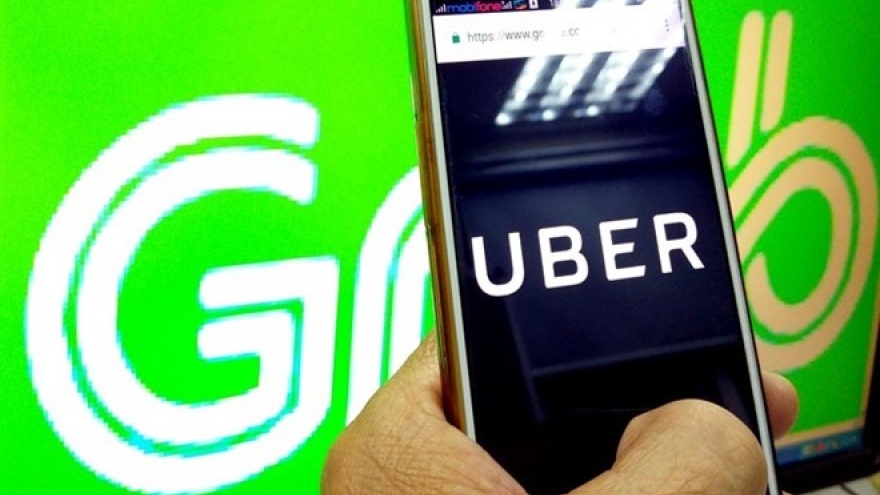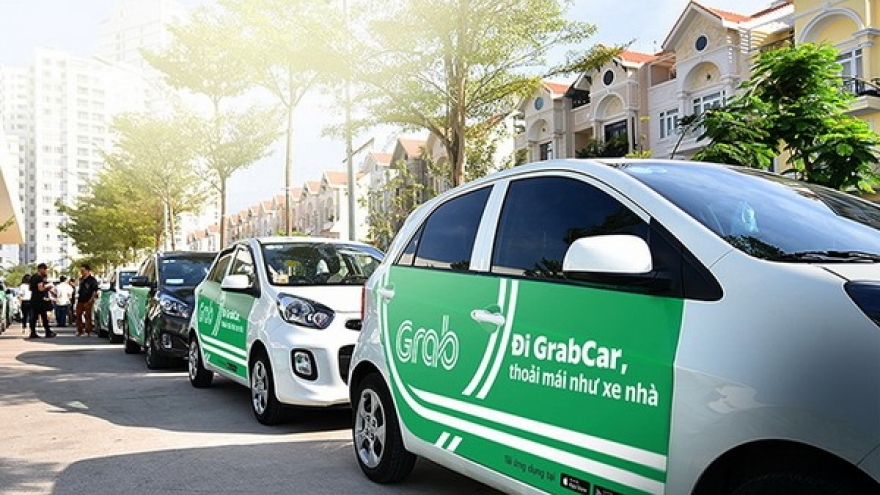More players arriving in ride-hailing business
Uber’s recent exit from Vietnam has prompted many local and regional companies to eye a larger slice of the ride-hailing market in the country.
 |
| Photo: Internet |
“Those following will be charged a maximum of VND30,000 (US$1.30) per day for operating costs, which is much more competitive than Grab,” he said.
Mr. Tuat targets launching FastGo in Ho Chi Minh City in July and in Da Nang in August. He will expand to eight large cities and provinces, approaching 5 million customers and 20,000 drivers, in 2019. Its target customer segment is young office workers, who are generally tech-savvy.
On the scene
The new players in the ride-hailing game have created serious competition, with any monopoly Grab may have held soon disappearing. Aber announced its entry into Vietnam on June 8, which was developed in 2015 by a group of young Vietnamese engineers studying in Europe.
Business Development Director Mr. Huynh Le Phu Phong explained that it provides six services: Aber Car, Aber Bike, Aber Truck, Aber Travel, Aber Business, and Aber Express, but will focus on its two ride-sharing services, Aber Car and Aber Bike, for the time being.
Users and drivers can look forward to attractive features from Aber. The company guarantees it will not charge higher prices during rush hour; a practice employed by both Grab and Uber that received a considerable amount of criticism from users. Drivers can also expect to benefit more from the app.
Traditional transport companies, meanwhile, are introducing their own new apps to meet passenger demand. The VATO app has actually been in the market for the last two years under the name VIVU, which changed to VATO and improved its system when the Phuong Trang Bus JSC (Futabus Lines) invested about US$100 million. VATO launched its app in April, after Uber exited Vietnam.
Along with the appearance of local apps, GO-JEK from Indonesia is preparing to come to Vietnam soon. A GO-JEK spokesperson told VET that although it could not provide details on its plans or time of entry, it could confirm it will offer quality services with incentives for passengers and drivers.
“We have had a positive impact on millions of people in Indonesia and we want to build on this by taking GO-JEK to countries where our impact will be felt the most,” the spokesperson said.
“This is why we are looking at Vietnam, where there are similar challenges that drove us to found GO-JEK in Indonesia.” The company has already advertised for drivers in Vietnam using its app.
Rocky road
The appearance of more ride-hailing apps has brought greater choice to Vietnamese passengers and triggered major competition in the industry, according to Mr. Nguyen Hoa Binh, Chairman of the NextTech Group.
Vietnamese ride-hailing companies, he went on, are in an imbalanced race with foreign apps such as Grab, which has a huge number of drivers and passengers in Vietnam’s large cities.
Grab has held the upper hand in the market since Uber withdrew, as it has an extensive customer base, including a large number of former Uber customers. Limitations remain, however, such as inaccurate locations and unstable technology.
“It’s difficult for Vietnamese enterprises to compete directly through similar promotions,” Mr. Binh said. “We should have reasonable policies and clear steps to attract passengers and create an ecosystem.”
FastGo has also faced its share of challenges. The business of ride-hailing, Mr. Tuat said, is now more competitive than ever and this puts pressure on FastGo. “We need to change to become better and attract our target customers,” he said.
“It’s hard to avoid the limitations of the app, which can only be detected when used. But we are improving every day.”
As a modern technology, according to Mr. Vuong Minh Thai, a student at the Posts and Telecommunications Institute of Technology, Vietnamese ride-hailing apps have the same functions as Grab and Uber and user-friendly interfaces but the biggest problem is that they have a small number of drivers. It can therefore be difficult to order a ride, especially during rush hour, with the average waiting time being 5-10 minutes.
“Many users aren’t willing to wait,” he added. So, increasing the number of cars and drivers is a pressing issue for local ride-hailing apps.
Growing market
Despite the obvious difficulties, the companies VET spoke to all believe the local market holds significant potential because the number of people using smartphones rises sharply every year.
The share of smartphones in 2017 was 84%, up 6% against 2016, according to the “Smartphone User Behavior” report from market researchers Nielsen Vietnam. The percentage of smartphone users in major cities compared to feature phones has been on the rise for 15 years.
Notably, the rapid development of technology from government policies provides advantageous conditions for these companies to flourish. Mr. Tuat firmly believes that Vietnam’s ride-hailing market could eventually reach into the billions of dollars.
“With a clear development roadmap, superior technology platforms, and the support of Vietnamese authorities and administrators, we believe that FastGo will develop sustainably,” he said.
Mr. Khuat Viet Hung, Vice President of the National Traffic Safety Committee, said Uber’s exit presents an opportunity for Vietnamese apps. Grab has succeeded in Southeast Asia and taken market share away from Uber, which should inspire local apps to likewise take on Grab.
“It is clear that opportunities go with challenges, but the opportunities are huge,” Mr. Hung believes.
GO-JEK, meanwhile, has also assessed Vietnam as being a fertile market. Its spokesperson told VET that Vietnamese consumers are happiest when they have choice.
“We hope that as we arrive in new markets, we will quickly become everyone’s lifestyle app,” the spokesperson said. It was hinted that their expansion strategy in Vietnam may start with ride-hailing but it ultimately aims to replicate the multiple-service business model that has made GO-JEK the market leader in Indonesia.



